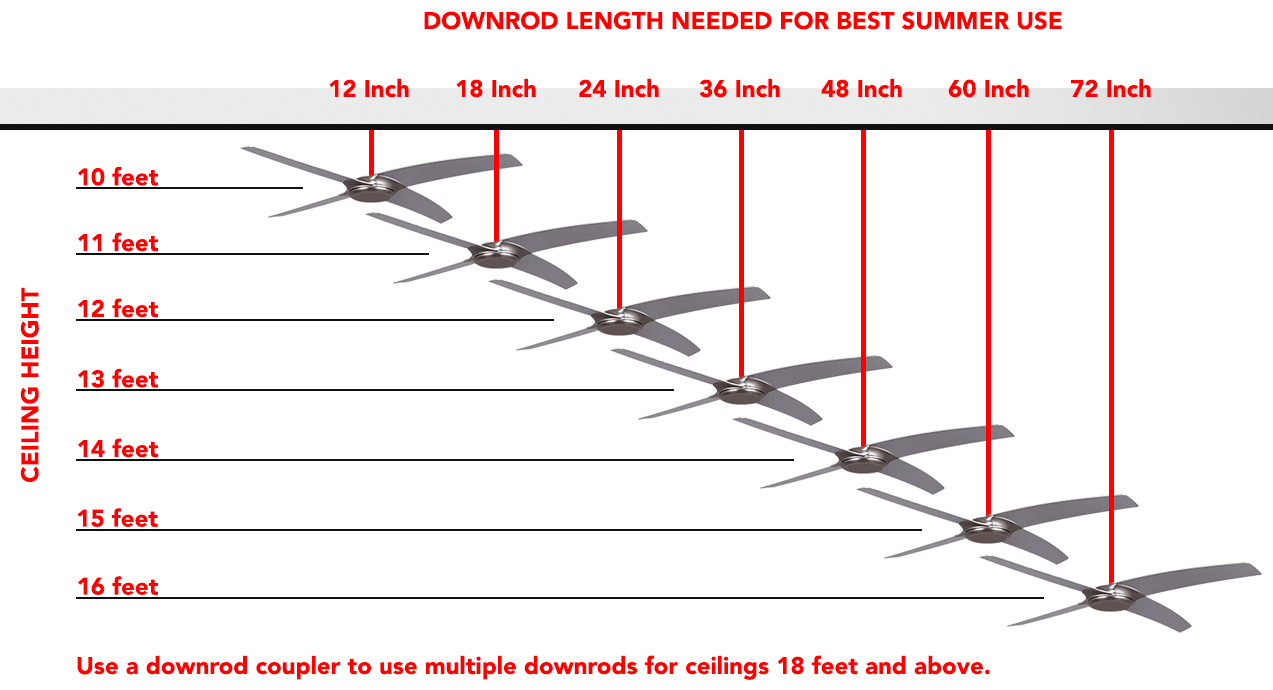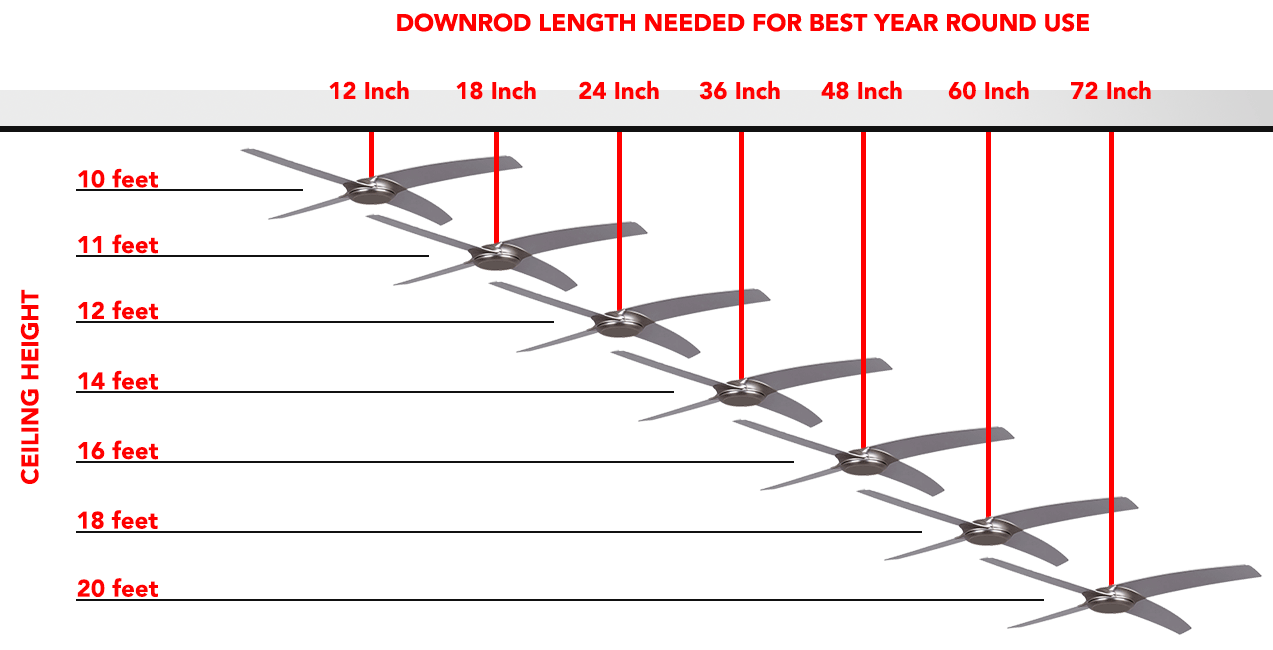We accept OEM & Customization. Low MOQ, Easy To Start. MOQ: 50 PCS.
What is the Minimum Height of a Ceiling Fan Above the Floor?
Setting up a ceiling fan requires careful consideration, especially regarding its height from the ceiling. Hanging it too low can lead to issues like poor airflow and potential damage to your ceiling. This guide will cover the optimal height for your ceiling fan, ensuring it’s effective and compliant with safety standards. Additionally, we’ll offer advice on selecting the appropriate downrod or close-mount kit. Keep reading to discover these essential tips!
A ceiling fan downrod is a metal tube that connects the fan’s motor housing to the mounting bracket, playing a crucial role in stability and reducing vibrations. It’s essential for preventing annoying sounds like knocking and ensuring smooth operation. The downrod also aids in optimal air circulation by maintaining a proper distance between the fan blades and the ceiling.
Regarding their universality, ceiling fan downrods aren’t standardized across different brands. It’s vital to match the downrod with the specific ceiling fan model for a perfect fit and functionality. While some models may share compatible downrods, it’s best to check the compatibility with your fan’s manufacturer and model to find the appropriate downrod.
When choosing a downrod for your ceiling fan, you can pick between threaded and non-threaded types. Both work with most fans and are held in place using a pin and screws to prevent twisting.
Ceiling Fan Downrod Length for Summer Use
The ideal ceiling fan height for summer use is usually between eight and nine feet from the floor. This height offers effective cooling without being too intrusive. If your ceiling is higher than this range, you might need a longer downrod for efficient air circulation. On the other hand, lower ceilings (under eight feet) might work better with a shorter downrod or even a close mount kit.
For instance, with a 14-foot ceiling, a 48-inch downrod positions the fan’s motor around 10 feet high, accounting for the mounting hardware. This setup leaves the fan’s base about 9 feet above the floor.
If you’re using the fan mainly at night, particularly in summer, consider a DC ceiling fan for its quieter operation than an AC model.
However, remember that fans can impact indoor plants and other household items. The airflow from the fan can be detrimental to certain plants and might affect other objects in the room, so it’s important to consider their placement.

Ceiling Fan Downrod Length for Winter Use
Air circulation is key when using ceiling fans, especially during winter. To maximize heating efficiency, reverse the direction of the fan blades so they push the warm air, which naturally rises, back down into the room. This is usually done by flipping a switch on the motor housing.
In winter, it’s advisable to position your ceiling fan lower than in summer. Hanging it about seven feet from the floor is recommended for optimal warm air distribution.
However, if the primary purpose of your ceiling fan in winter is to assist with heating, keep it closer to the ceiling. A fan that’s hung too low won’t be as effective in pushing the warm air, accumulated at the ceiling, back down to the living space. For efficient heat circulation, the fan should not be installed too far from the ceiling, ensuring it can effectively return the trapped heat to the area where it’s most needed.
For effective year-round use of ceiling fans, here’s a simple guideline to follow:
Measurement and Height Requirements
The ideal installation height for ceiling fans is to have the fan blades at least 2.1 meters above the floor and 300mm below the ceiling.
Balancing for Year-round Efficiency
If you’re planning to use your ceiling fan throughout the year, adjust the height midway between the recommended summer and winter heights. This ensures the fan is high enough for efficient operation in winter, yet low enough for effectiveness in summer.
Steps for Optimal Installation
- Measure your ceiling height.
- From this height, deduct the maximum 8-foot height that a fan should hang from a high ceiling.
- Choose a downrod that is approximately half this measurement in length.
This approach ensures that your ceiling fan is positioned optimally to enhance both your cooling system in the warmer months and your heating system in the cooler months. Additionally, installing the fan at this height contributes to the overall aesthetic appeal of the room, blending well with other fixtures.

For ceilings taller than average, choosing the right downrod length is essential to balance cooling efficiency and room aesthetics. Manufacturers often recommend positioning ceiling fans about eight to nine feet above the floor for optimal cooling. However, in rooms with very high ceilings, lowering the fan to this extent can compromise the spacious feel and reduce headroom.
It’s important to find a middle ground where the fan is low enough to effectively cool the room but high enough to maintain the room’s open ambiance. Additionally, ceiling fans are useful in colder seasons for maintaining a comfortable room temperature by circulating warm air. When selecting a downrod for higher ceilings, consider both the functional and visual impact on your space.
Conclusion
In conclusion, selecting the correct downrod length for your ceiling fan is crucial for both functionality and aesthetics. We trust this guide has provided you with valuable insights into the ideal height for your ceiling fan, ensuring it performs optimally throughout the year. If you have any more questions about ceiling height, downrods, or other related topics not covered here, please feel free to contact us. We’re always here to assist you!
